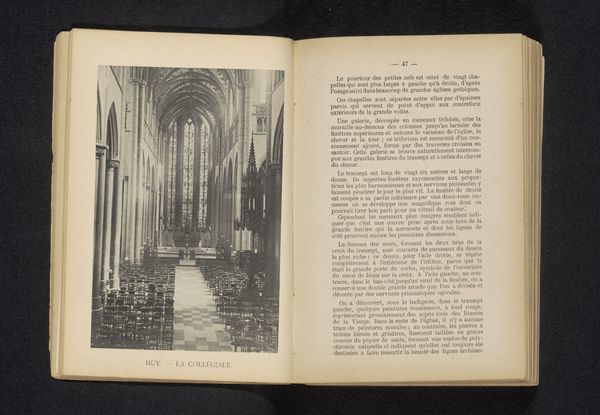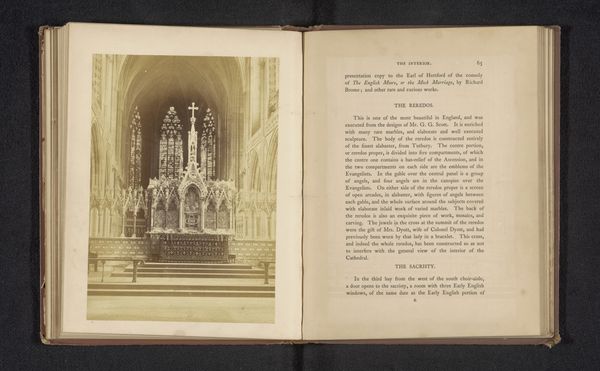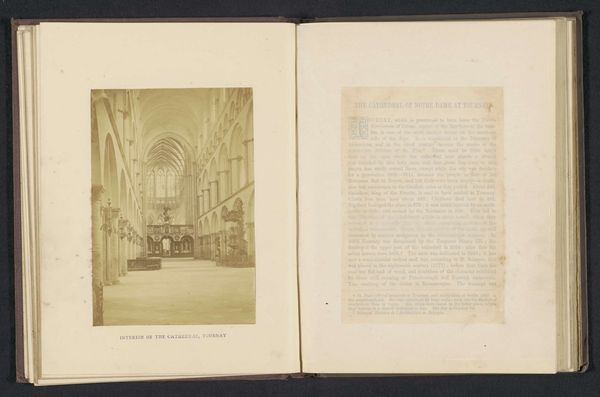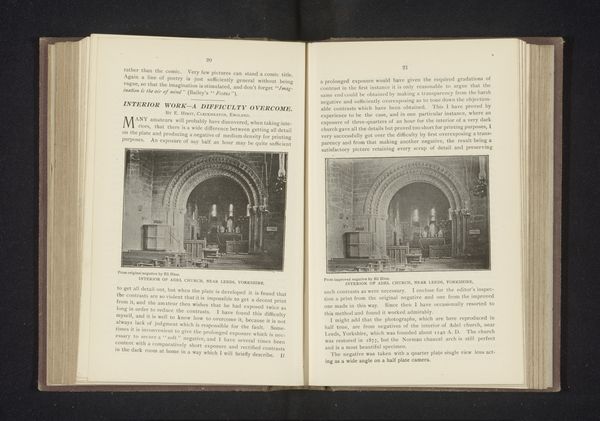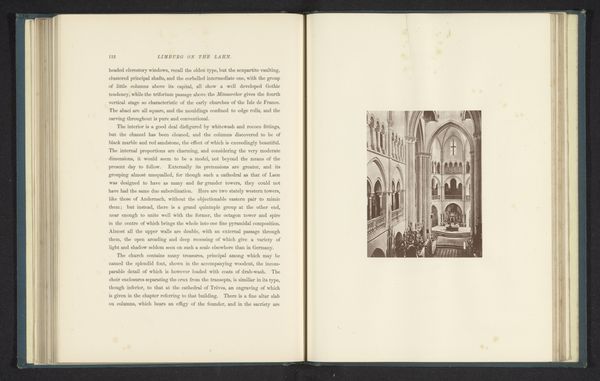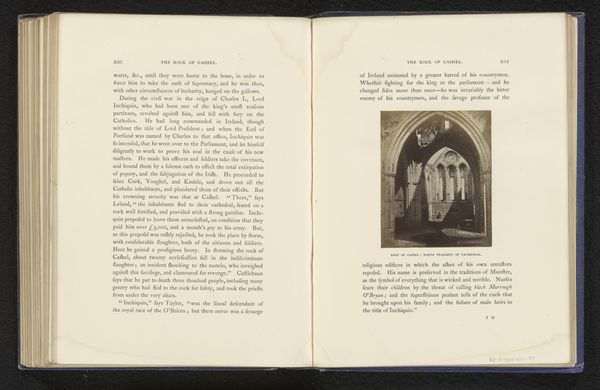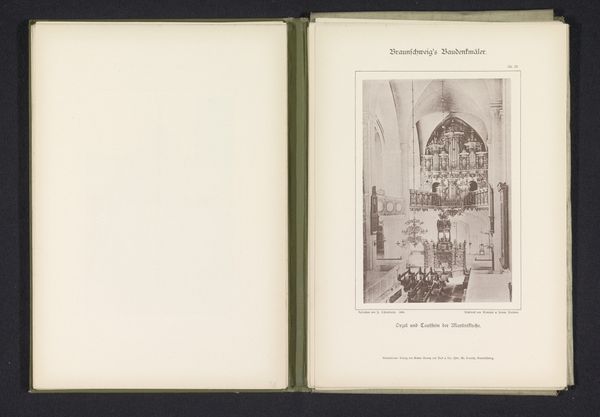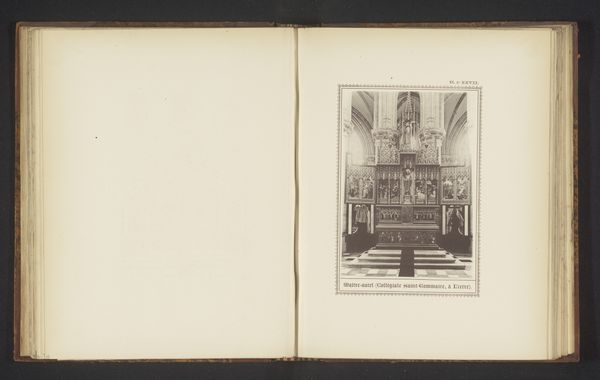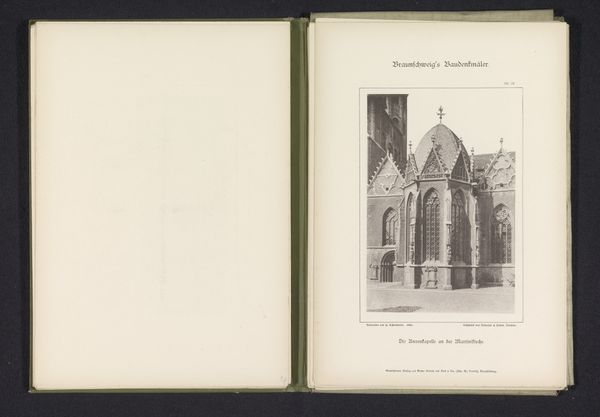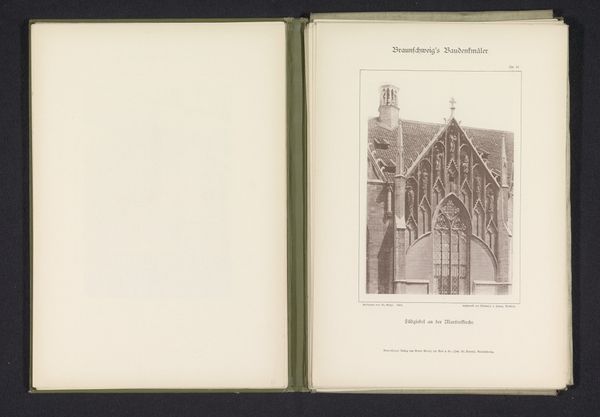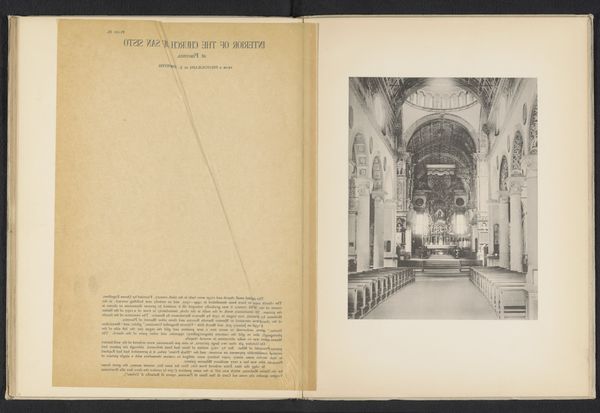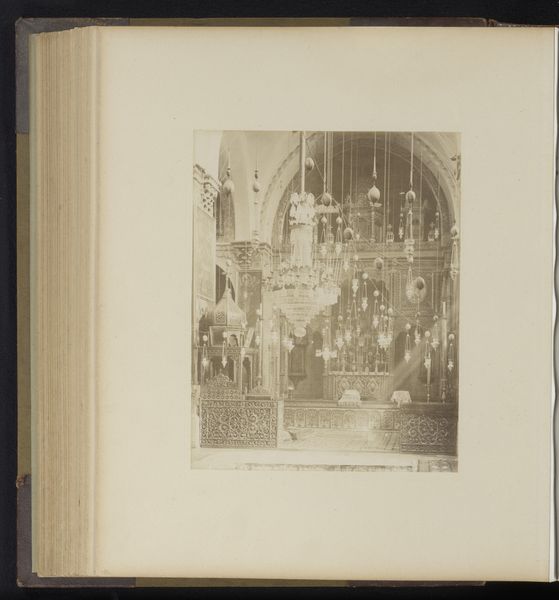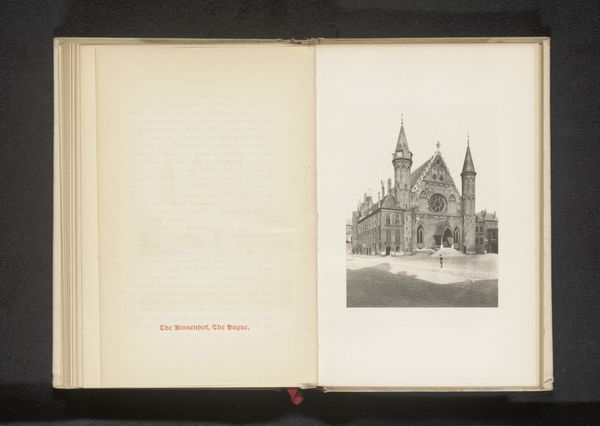
print, photography, architecture
#
medieval
# print
#
landscape
#
photography
#
watercolour illustration
#
watercolor
#
architecture
Dimensions: height 175 mm, width 151 mm
Copyright: Rijks Museum: Open Domain
Curator: Looking at this faded photographic print of the Sint-Nicolaaskerk in Kalkar, captured by Friedrich Brandt before 1880, one is immediately struck by the immensity of the space. Editor: Indeed, the stark tonal range casts an almost somber mood. The monochrome emphasizes the rigid architectural geometry and the seemingly endless verticality. It certainly evokes a sense of awe. Curator: Observe how the light filters through the high gothic windows, casting linear patterns upon the nave. Brandt uses light and shadow to amplify the architectural details, the rib vaults, and the pointed arches. It is quite striking how these formal features direct the eye toward the apse, where the altar stands almost like a distant beacon. Editor: It's hard not to think about the sociopolitical role that this church likely played. Churches weren’t just places of worship; they represented a nexus of community, authority, and social control, deeply interwoven with issues of class and regional power dynamics in late 19th century Germany. How might Brandt's image serve to affirm or perhaps even subtly critique the influence of the Church? Curator: Perhaps. Brandt's use of perspective, though, really underscores the almost scientific precision applied in documenting the building's structural properties. One sees an intersection of artistic vision and architectural recording. He does this really skillfully, not only displaying an interior but also carefully crafting its visual presence as form. Editor: I agree, but by immortalizing it photographically, hasn't Brandt also inevitably turned the sacred architecture into an object of observation? Doesn’t it echo, however faintly, that power to observe is intertwined with control over representation itself? It feels less reverential than pragmatic in a time of dramatic societal change. Curator: Your argument gives us a fuller image; it deepens the composition, and in turn, illuminates its context. Editor: And your attention to formal technique gives this space clarity and dimension.
Comments
No comments
Be the first to comment and join the conversation on the ultimate creative platform.
